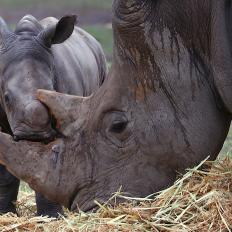How Did Lions Learn to Climb Trees?
Although you may never have seen a lion in a tree, lions in Uganda and Tanzania spend a large portion of their lives laying in branches high above the ground. Scientists believe it's a skill that all lions are capable of.
Related To:

Photo By: Achim Mittler, Frankfurt am Main
Photo By: David Chen / EyeEm
Photo By: Sean Russell
Photo By: Don Cook
Photo By: WLDavies
Photo By: Copyright@JGovindaraj
Photo By: Tomi A / 500px
Photo By: Paul Souders
Photo By: VW Pics
Most lions don't have a need to climb trees. They live in prides and can protect and defend each other on the ground.
Lions have powerful forequarters and a stiff back. Unlike leopards, tree-climbing isn't natural lion behavior. In fact, climbing down poses a risk to heavy male lions who risk dislocating a limb.
After heavy rainfall in Zimbabwe in 1963, lions were driven up trees by relentless Stomoxys biting flies. This learned ability is likely what led to present-day tree-climbing lions.
Lions may also climb trees to get a better vantage point– surveying the land for prey.
Some lions climb trees to escape the heat and enjoy a cool breeze.
In Eastern Africa, where lions live in smaller prides, the trees are the safest place they can be.
In habitats with large rhino or buffalo populations, the trees offer a safe haven from stampedes.
To be able to climb, lions must select the right kind of tree. They often climb umbrella acacia thorn trees and African sycamore fig trees because of their low, horizontal branches.
Tree-climbing is a part of lion culture passed down from generation to generation. In some parts of Africa, you can find entire prides in a tree.
























